Basic Sentence Structures
in the English Language
A sentence is a group of words that are put together to make one complete thought.
Click Here for Step-by-Step Rules, Stories and Exercises to Practice All English Tenses
Intro
To understand sentence structures in the English language, you must first have a general understanding of the types of words that are used to make sentences.Noun – a person, place or thing
Singular examples (one): brother, home, sock, mousePlural examples (more than one): brothers, homes, socks, mice
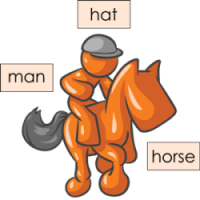
Verb – an action
Examples: jump, sit, talk, have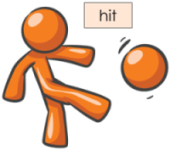
Adjective – describes a noun
Examples: colorful shirt, funny story, tall boy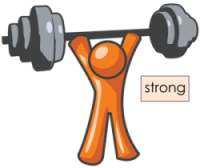
Adverb – describes other words (not nouns)
Examples: jumped yesterday, talks fast, sings loud, very pretty, luckily for us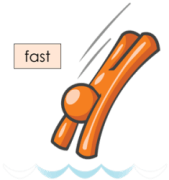
Subject – the noun or nouns that perform the action
Example: The dog jumped.The subject of this sentence is the noun, dog, because it is performing the action of jumping.
Example: Dogs and cats sleep.
The subjects of this sentence are the nouns, dogs and cats. This is called a compound subject because there is more than one subject performing the same action.

Object – the noun or nouns that receive the action
Example: The child drank milk.The object of this sentence is the noun, milk, because the child is drinking the milk. The milk is receiving the action.
Example: She is eating bread and cheese.
The objects of this sentence are the nouns, bread and cheese. The subject is eating them both.
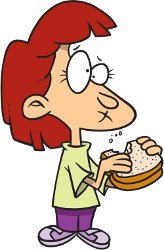
Five basic sentence structures
There are five basic sentence structures in the English language.
1. Subject-Verb
Examples:- The boy plays.
- Jack eats.
- Sara sits.
2. Subject-Verb-Object
Examples:- The girl pets the cat.
- I love apples.
- Bill kicks the ball.
3. Subject-Verb-Adjective
Examples:- Lisa is pretty.
- They are nice.
- I am sad.
4. Subject-Verb-Adverb
Examples:- Maria laughs loudly.
- The dog jumps high.
- Apples are everywhere.
5. Subject-Verb-Noun
Examples:- I am the teacher.
- Jon is a carpenter.
- The boy is a student.
Expanding Sentences
The examples above are basic sentences. Basic sentences can be
expanded, or lengthened, by adding adjectives, adverbs and objects.1. Subject-Verb
- Jack eats.
This is the basic subject-verb pattern.
- Jack quickly eats.
An adverb is added (quickly) to tell how Jack eats.
- Jack quickly eats
carrots.
An object is added (carrots) to tell what Jack eats.
- Jack quickly eats carrots at
home.
Another adverb is added (at home) to tell where Jack eats.
- Jack quickly eats fresh carrots at
home.
An adjective is added (fresh) to tell what kind of carrots Jack eats.
2. Subject-Verb-Object
- Bill kicks the ball.
This is a basic subject-verb-object pattern.
-
Bill kicks the red
ball.
An adjective is added (red) to tell the color of the ball.
- Bill kicks the red ball
hard.
An adverb is added (hard) to tell how Bill kicks the ball.
- Bill kicks the red ball hard every day.
Another adverb is added (every day) to tell when Bill kicks the ball.
3. Subject-Verb-Adjective
- She looks pretty.
This is the basic subject-verb-adjective pattern.
- She looks pretty
tonight.
An adverb is added (tonight) to tell when she looks pretty.
- Lisa looks pretty
tonight.
The subject is identified with a name (Lisa).
4. Subject-Verb-Adverb
- Apples are
everywhere.
This is the basic subject-verb-adverb pattern.
- Green apples are
everywhere.
An adjective is added (green) to describe the apples.
- Ripe, green apples are
everywhere.
A series of adjectives are added (ripe and green) to describe the apples.
5. Subject-Verb-Noun
- The boy is a
student.
This is the basic subject-verb-noun sentence pattern.
- Jon is a student.
The subject is identified with a name (Jon).
- Jon is a smart
student.
An adjective is added (smart) to tell what kind of student Jon is.
- Jon is a smart student at
school.
An adverb is added (at school) to tell where Jon is a smart student.
Get Updates, Special Offers, and English Resources
Download your FREE GIFT (the first two chapters of
English Short Stories Book and Workbook)
as soon as you join!

By submitting your email, you consent to receiving updates and newsletters from us and to the sharing of your personal data with third parties for the purposes of sending you communications. We will not spam you. You can unsubscribe at any time. For more information, please see our privacy policy.
Return
from Basic Sentence Structures in the English Language
to Learn to Write in English





